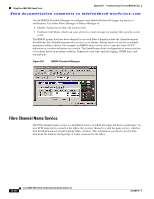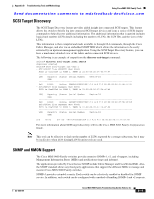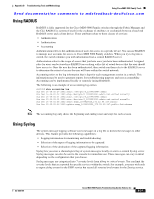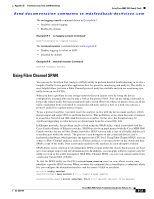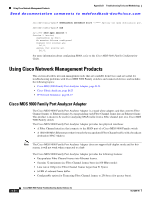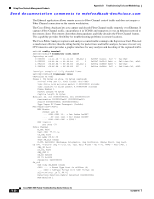Cisco MDS-9124 Troubleshooting Guide - Page 538
Logging Levels, Enabling Logging for Telnet or SSH, show logging nvram, no logging console
 |
View all Cisco MDS-9124 manuals
Add to My Manuals
Save this manual to your list of manuals |
Page 538 highlights
Using Cisco MDS 9000 Family Tools Appendix B Troubleshooting Tools and Methodology Send documentation comments to [email protected] A unique feature within the Cisco MDS 9000 Family switches is the ability to send RADIUS accounting records to the Syslog service. The advantage of this feature is that you can consolidate both types of messages for easier correlation. For example, when you log into a switch and change an FSPF parameter, Syslog and RADIUS provide complimentary information that will help you formulate a complete picture of the event. Log messages are not saved across system reboots. However, a maximum of 100 log messages with a severity level of critical and below (levels 0, 1, and 2) are saved in NVRAM. You can view this log at any time with the show logging nvram command. Logging Levels The MDS supports the following logging levels: • 0-emergency • 1-alert • 2-critical • 3-error • 4-warning • 5-notification • 6-informational • 7-debugging By default, the switch logs normal but significant system messages to a log file and sends these messages to the system console. Users can specify which system messages should be saved based on the type of facility and the severity level. Messages are time-stamped to enhance real-time debugging and management. Enabling Logging for Telnet or SSH System logging messages are sent to the console based on the default or configured logging facility and severity values. Users can disable logging to the console or enable logging to a given Telnet or SSH session. • To disable console logging, use the no logging console command in CONFIG mode. • To enable logging for telnet or SSH, use the terminal monitor command in EXEC mode. Note Note: When logging to a console session is disabled or enabled, that state is applied to all future console sessions. If a user exits and logs in again to a new session, the state is preserved. However, when logging to a Telnet or SSH session is enabled or disabled, that state is applied only to that session. The state is not preserved after the user exits the session. B-22 Cisco MDS 9000 Family Troubleshooting Guide, Release 3.x OL-9285-05




